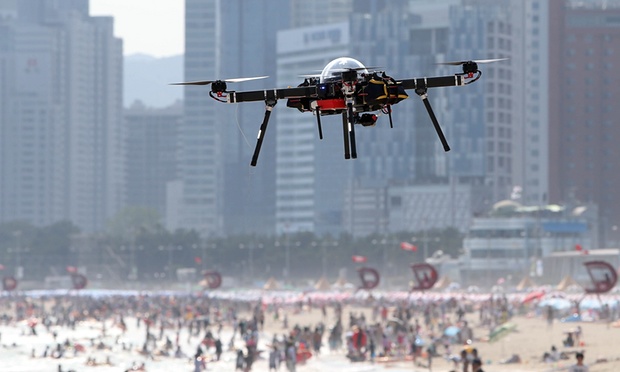
- by Clay Dillow
America’s burgeoning drone industry is being threatened by liability risks.
Last month, the Federal Aviation Administration approved its 1,000th commercial drone permit, 998 more than it granted last year at this time.
For many in the nascent commercial drone industry, that momentum bodes well for an industry expected to generate billions of dollars in economic impact over the next ten years, particularly after a more cohesive set of commercial drone regulations is put in place by the FAA next year. But as commercial drones move toward ubiquity, the industry still faces a major obstacle in assessing and appraising drone-related liability and adequately insuring both drones and the companies that use them.
“You’ve got this new emerging industry and there’s a lot of regulatory uncertainty and there’s a lot of companies with liability concerns,” says Lisa Ellman, a drone policy expert and co-chair of the Unmanned Aircraft Systems Group at the Washington D.C. offices of law firm Hogan Lovells. “Liability tends to be the first thing that comes to mind for someone developing a new business.”
A report released last month by UK insurance house Lloyd’s details just how challenging insuring the drone industry may become in the years ahead. The report cites “patchy regulatory regimes” and “poor enforcement” among the key risks facing the drone industry—risks that exist beyond the control of drone manufacturers or operators themselves.
Pricing risk in the absence of strong regulatory frameworks and enforcement mechanisms could prove troublesome, the report says. And, that’s before you delve into issues like third-party liability for a technology where risks range from broken windows or roof damage to major aviation catastrophes.
All of this grows increasingly important in the U.S. as the Federal Aviation Administration moves closer to issuing a brand new set of broad commercial drone regulations. Those regulations could go a long way towards helping insurers price risk in the commercial drone space.
The industry expects those regulations to make it much easier for companies and individuals to operate drones for commercial purposes, potentially putting thousands upon thousands of new unmanned aircraft into U.S. skies. This new development could leave insurers scrambling to figure out how to effectively (and fairly) cover drone risk in an emerging market that offers little meaningful data and risk metrics.
“Unfortunately, there are big questions and not enough answers,” says Tom Karol, a general counsel for the National Association of Mutual Insurance Companies (NAMIC). “There needs to be more clarity on how people will use these, and what will be allowed and won’t be allowed is a big issue.”
U.S. insurers and regulators do have some insurance models they can use as examples when crafting legal and policy rules. The European Union has turned to a page in its larger civil aviation code to require that drones larger than 20 kilograms, or roughly 44 pounds, meet a minimum third-party liability requirement based on the mass of the aircraft (though given that many drones weigh in at far less than 20 kilograms, the regulation stops short of being an insurance mandate).
Transport Canada, the country’s civil aviation authority, has gone one step further. While authorities there have eased some restrictions on commercial drones, they also require professional drone operators to obtain $100,000 in liability insurance for drones of any size. This unusual requirement likely serves to keep some less-than-professional pilots from taking to the sky for commercial purposes, but it’s not yet clear if (or how such) a requirement might impact Canada’s commercial drone industry.
Recent reports of “close calls” between drones and commercial aviation in the U.S. (as well as a rash of incidents in which drones have crashed into crowds at sporting events) have only served to heighten awareness of drone-related risks. Drone service companies like Measure 32 have emerged as firewalls between companies and potential drone risks, providing proper regulatory permits, experienced pilots, and a liability buffer between clients and the drone operators.
However, until the insurance industry and regulators can figure out a fair and consistent way of insuring both drone service companies and businesses that operate drones themselves, the U.S. commercial drone industry could find itself unable to take off even after the FAA issues its final commercial drone regulations next year, Ellman says. “The insurance industry itself is grappling with a lot of these issues, and how all this plays out is integral for the future of the industry.”
